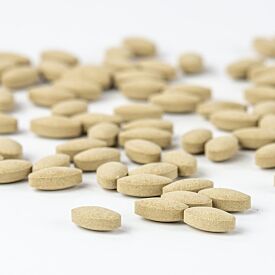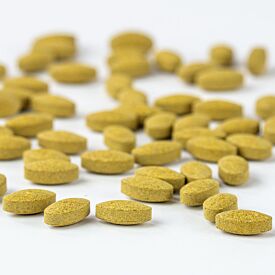Understanding Chronic Kapha in the Sinuses
While some of our clients and customers have congestion and sneezing during predictable times of the year (typical of allergies), there are those that struggle with congestion and drainage for months and, in some cases, year-round. Treating these cases, when there is no apparent trigger or pattern, can be exasperating and clients begin to accept it as a normal part of life. The benefits of clearing congestion (excess kapha) from the sinuses extend far beyond offering physical relief. The nostrils are called shirodwar in Sanskrit (meaning, gateways to the head). They bring prana (the breath of life) to the head and the entire body; if the nostrils are blocked, the mind begins to lose clarity, memory, balance, and discrimination, and the body will begin to lose its vitality and dynamism.1
Prana Vaha Srotas: The Anatomy
The channel for prana (prana vaha srotas) begins in the heart and GI tract, channels through the respiratory tract, and has its opening in the nose.2 Healthy prana relies on a free flowing and balanced channel. But as doshas enter the tract, sequential stages of imbalance of the channel do arise.3
First, the channel begins to have an excess of one of the doshas (vata, pitta, or kapha). Congestion is a classic example of excess kapha building in nasal passageways. The second stage occurs once there is sufficient dosha causing the channel to become stagnant. When a nostril is blocked because of excessive kapha, prana cannot flow and becomes immobile. When the stasis is persistent, the metabolism of the tissues begins to slow as well, causing a build-up of tissue (just like excess fat accumulates in the body when the bodily metabolism slows). In prana vaha srotas, this third stage of imbalance manifests as polyps within the nostrils.
Sinuses are large bone cavities (whose pink lining produces mucus) that feed into the prana vaha srotas.
- Maxillary sinuses- located along the cheek bones.
- Frontal sinuses- located just above the eyebrows.
- Ethmoid sinuses- located on either side of the inside corner of the eye.
- Sphenoid sinuses- located behind the ethmoid sinuses.
Pain along these areas likely indicates kapha build-up in the respective sinus.
Causes of Persistent Kapha
Unlike in the case of allergies, there is no one identifiable trigger and the client will usually not complain of irritated eyes or sneezing. In this case, we often find that the metabolic fire (agni) is poor, leading to high kapha and even ama (toxic wastes caused by poor digestion). Causes of this state could be one of the following:
- Excess sweet, sour, or salty foods
- Cold, damp weather and cold drinks
- Heavy food intake (dairy, fried, or oily foods)
- Poor food combining
- Foods high in toxins and chemicals, making them hard to digest
- Sedentary lifestyle (Note that the wind of prana stokes the metabolic fire of its channel; kapha is likely to grow without proper movement of prana within the respiratory tract.)
Alternatively, kapha may arise as an inappropriate response of the nervous system to a particular stressor. Think of it as kapha being called upon to ground unstable vata or soothe irritated pitta. The littlest changes set the nervous system off, such as changes in temperature, humidity, or barometric pressure. Dry weather, spicy foods, or even stress can also set off the nervous system resulting in excess mucus production.
In either case, agni needs to be stabilized and nurtured so that the kapha is kept at a healthy level to serve its normal function—to lubricate the passageways and clear any foreign material. The second scenario above requires the added task of balancing the nervous system so that it responds more appropriately and not erratically.
Signs of Sinus Kapha
Kapha can be obvious and apparent, but it can also present more subtly. Look for these signs and symptoms of kapha within the upper portion of prana vaha srotas:
- Drainage from the nose
- Cough (especially when worse at night time)
- Sore throat (particularly if repetitive and in the morning)
- Pain on the face (along the sinuses)
- Pain in the jaw or teeth
- Bad breath
- Bad taste in the back of the mouth
- Nausea
- Poor digestion and lack of appetite
Regardless of whether the kapha is very bothersome to client or more inconspicuous without obvious challenges, remember clearing the kapha for free flow of prana is highly relevant for optimal mental and bodily functions.
There are many clients that struggle with this problem and are given very few options. Addressing their challenge at the root level of Ayurveda allows them to experience relief and health at a deeper level. For instance, not only will the client be able to breathe better, but the energy level will also improve because of a more robust agni.
The next part of this series will illustrate practical and clever ways of bringing flow and freshness to a challenged nasal passageway.
References
1 Lad, Vasant. Textbook of Ayurveda: Volume 1. (Albuquerque, NM: The Ayurvedic Press: 2002), page 228.
2 Lad, Vasant. Textbook of Ayurveda: Volume 2. (Albuquerque, NM: The Ayurvedic Press: 2006), page 343.
3 Lad, Vasant. Textbook of Ayurveda: Volume 2. (Albuquerque, NM: The Ayurvedic Press: 2006), page 298.










